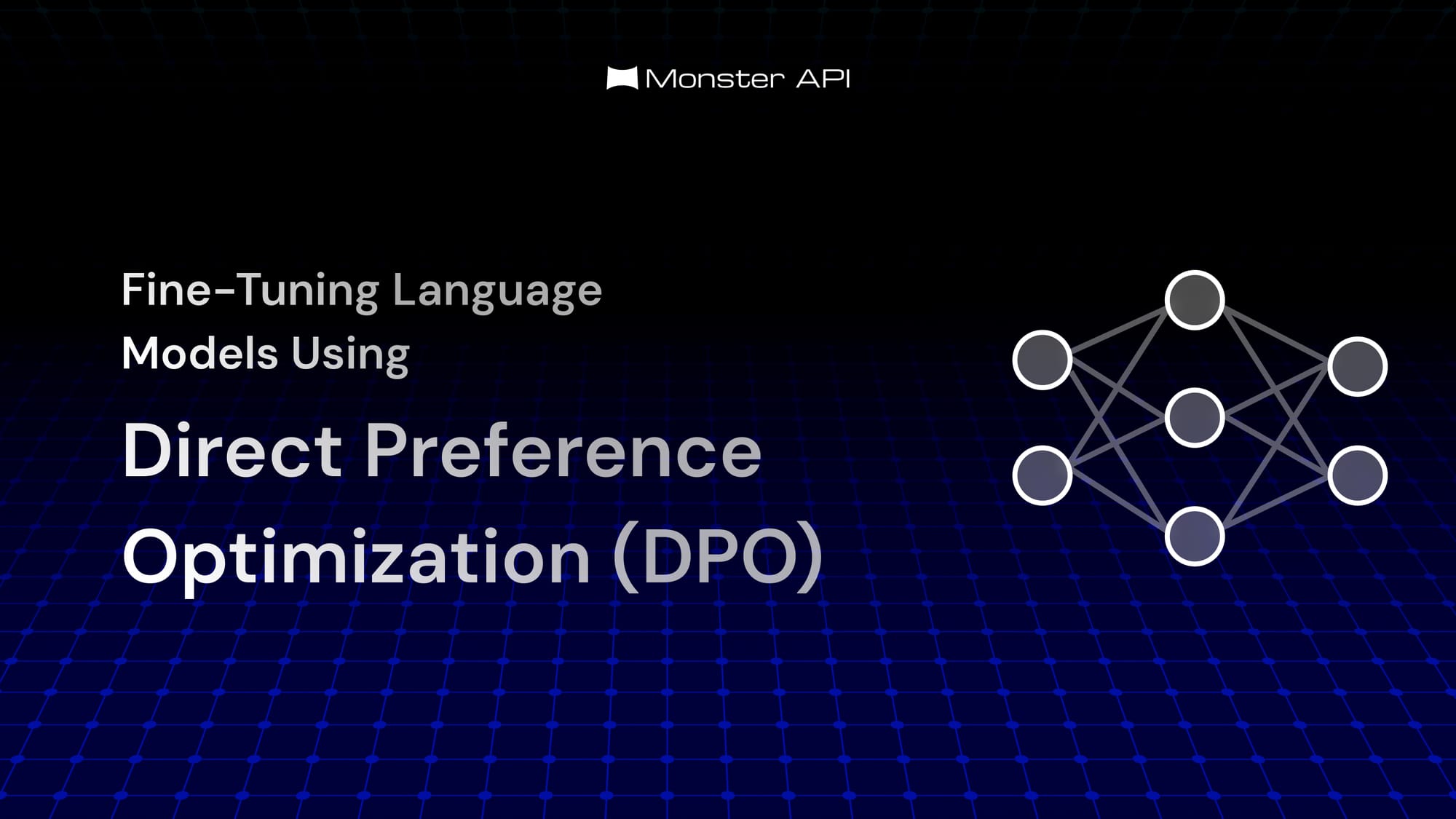Fine-Tuning Language Models Using Direct Preference Optimization (DPO)
Fine-tuning LLMs to match human preferences is challenging. Direct Preference Optimization (DPO) offers a simpler, more efficient alternative to RLHF by directly using preference data without reinforcement learning. How does it work? Let’s find out!

Fine-tuning large language models (LLMs) to align with human preferences has always been a challenge. Traditional methods like Reinforcement Learning from Human Feedback (RLHF) have been widely used, but they come with their fair share of issues—unstable training, complex reward models, and high computational overhead. That's where Direct Preference Optimization (DPO) comes in, offering a simpler yet highly effective alternative that ditches reinforcement learning altogether.
Why Direct Preference Optimization (DPO)?
DPO is a contrastive learning method that directly optimizes a model using human preference data. Instead of going through the hassle of training a separate reward model, DPO fine-tunes the LLM by comparing responses in a pairwise fashion. This approach makes training far more stable and efficient compared to RLHF.
How DPO Works
- Gathering Preference Data: We start by collecting a dataset where human annotators rank model-generated responses for a given input.
- Optimizing for Better Responses: Instead of predicting rewards, DPO adjusts the likelihood of preferred responses while reducing the likelihood of less preferred ones.
- Fine-Tuning the Model: The model is updated using a contrastive loss function that directly integrates human preferences, eliminating the need for reinforcement learning techniques like PPO.
The Math Behind DPO
DPO uses a contrastive loss function to fine-tune the model:
where:
- y+is the preferred response,
- y−is the less preferred response,
- Πθ represents the model's probability distribution.
The goal is simple: Maximize the probability of generating human-preferred responses while minimizing those deemed less effective.
Why DPO is a Game Changer
- No Reward Model Required: Unlike RLHF, DPO gets rid of the extra step of training a reward model.
- Simple and Effective: No reinforcement learning means fewer complexities and more stable training.
- More Efficient: Without reward models and PPO, DPO reduces computational costs significantly.
- Less Tuning Hassle: Since the approach is straightforward, there’s less hyperparameter tuning involved.
Where Can You Use DPO?
DPO can be applied across various NLP tasks, such as:
- Improving AI Chatbots: Ensuring responses are aligned with user expectations.
- Filtering Content: Fine-tuning models to remove harmful or inappropriate content.
- Personalized AI Assistants: Making AI models adapt to individual user preferences.
- Customer Support Automation: Training models to generate more relevant and useful responses.
How to Implement DPO
If you're looking to implement DPO, follow these steps:
- Prepare a Preference Dataset: Collect a dataset where responses are labelled based on human rankings.
- Modify the Fine-Tuning Objective: Use a contrastive loss function instead of a reward-based approach.
- Optimize the Model: Train the model using standard gradient descent techniques with DPO loss.
- Evaluate Performance: Compare DPO with RLHF-based models to check effectiveness.
Conclusion
Direct Preference Optimization (DPO) has emerged as an effective approach for aligning models with human preferences, offering a practical and efficient alternative to traditional Reinforcement Learning with Human Feedback (RLHF).
Its simplicity in implementation, along with improved training stability and reduced computational demands, makes it an attractive option for model fine-tuning. By retaining foundational knowledge from the original model, DPO ensures that the model continues to leverage its pre-existing knowledge while adapting to new preferences and tasks. As AI alignment becomes increasingly important, DPO presents a promising solution for training models that better reflect human values.

